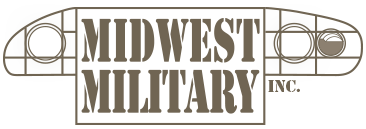Suggestions
- ALWAYS use proper respiratory equipment when working on your vehicles and when utilizing any paint or chemicals. ALWAYS!
- Do not rush. Take your time. If you are trying to meet a timetable to get your vehicle done before a show or swap meet, again, do not rush.
- Tip Size: The paint viscosity, uncatalized is 20-24 sec. #3 Zahn @ 77F. With catalyst it goes to about 18-22 sec. Catalyst alone is 13-15 sec.CHECK YOUR PAINT GUN MANUFACTURER’S SPECIFICATIONS AGAINST THE ABOVE DATA.Rule of thumb for above specs: 1.4/1.6 tip for pressure pot, 1.4 Gravity, and 1.6 (larger to 1.8 okay) for siphon. For HVLP, 1.4 tip.
- Remember – Catalyst activated paint will not adhere to any type of non-catalyst activated paint for more than a week. Yes that means you have to get down to the bare metal before you prime.
- Once the paint (5 parts) and catalyst (1 part) have been completely mixed together at this ratio, depending on your particular needs and painting environment, you may reduce this mixture by no more than fifteen (15%) percent. Under normal circumstances, a reduction of less than five (5%) should suffice. Activated paint must be used within 2 hours.
- Now is not the time to save a few dollars, buy mixing cups and paint strainers used by auto body and painting professionals. They are available at any reputable auto paint distributor.
- Test spray on a piece of primed scrap metal, or an inconspicuous area prior to painting your entire vehicle. Do not rush.
- Reducers for urethane paint offered by PPG with a high Butyl Acetate content are very compatible with this paint. The two most common types are DT-870 and DT-885. The DT-885 is best used in warmer weather since it dries slower. Please refer to PPG’s web site for the specific properties of these products.
- Once all of your sanding and dust has been blown off, wipe down the entire area with non-resin, micro fiber tack cloths. These can be found at any of the large home improvement centers. Then, using old white T-shirts as disposable rags, clean the surface with PPG’s wax and grease remover #330.
- Do not use Lacquer Thinner, VM&P Naphtha, Mineral Spirits, Acetone, Turpentine, etc., or anything else other than Xylene as a reducer for TM9 enamel paints. Read the paint label before using the paint. Lacquer thinner should only be used to clean your equipment once you are done painting.
- After sandblasting or stripping paint, if there is any corrosion remaining it will cause the paint to fail. Rust encapsulators, as sold by Eastwood located in Pottstown PA (RE: www.eastwoodco.com) are suggested.
- Rather than using a flat white paint for stenciling purposes, consider using white spray primer. This finish is usually very flat. Always experiment on a test piece prior to spaying any portion of your jeep, truck or armored vehicle.
- Go to the local grocery store and buy a box of bathroom sized Dixie cups and at least two turkey basters. When mixing the paint and catalyst, use the small Dixie cups to transfer the paint into the mixing cups. Use a turkey baster to add the catalyst to the paint in the mixing cups. Use a different turkey baster to add any reducer. These steps will help insure a more controlled measuring process. For larger batches you can use common Pyrex mixing bowls.
- According to a professional automobile and truck restorer, the less reducer used the better. Too much reducer can cause catalyst activated urethane paint to shrink near corners and inside surfaces. This will cause the paint to crack.
Suggested Web Sites
The following web sites have some great tips and suggestions as you begin to work on your Military Vehicle restoration. Regardless of your level of experience, these sites are worth a visit.
- Body and Paint – purplesagetradingpost.com/sumner/techinfo/tech–body-paint1.html
- Auto Body 101 Web Site – autobody101.com/forums


